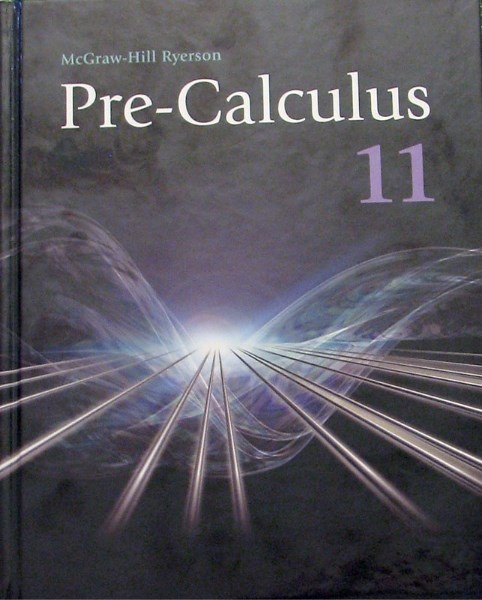Want a good read? Try the new Pre-Calculus textbook that Grade 11 students throughout the province are using for the first time this year, which is at the leading edge of the new revised math program that is gradually being implemented into the curriculum at all grade levels.
“Grade 10s started the new revised math last year, so this is their second year in the program,” said Greg Kuzniuk from Alberta Education as he explained that, by 2014, all the old math programs will be phased out in Alberta schools.
In 2008, kindergarten and Grades 1, 4 and 7 took the revised math and those students continued studying the program. In 2010, the first Grade 10 students took revised math programs.
Pre-Calculus is full of boxed factoids, many of them Canadian, that show the fascination and the practicality of math. It’s just one of three similarly written new textbooks available this year for Grade 11 students, depending upon their career aspirations and the stream of studies they have chosen. The text shows how to use math to solve everyday problems, but it also outlines career possibilities.
In the first few pages, for example, students learn about the Diavek Diamond Mine in the Northwest Territories and, at the same time, they’ll calculate how many gems will be extracted over a 20-year span. A photo of a spider web invites them to calculate the geometric series of the hexagonally-placed strands and, just a few text pages later, problems about mathematical series are explained as the students determine the amount of power produced over six years by wind turbines in Pincher Creek.
And that’s just the first chapter!
By the end of the term, under the heading Career Link, students will read about exciting jobs that require the daily solving of problems equivalent to the ones they are studying. They’ll learn, for example, that professional football players instinctively use mathematics when they figure out the trajectory of a ball that is kicked between the field goals. They’ll learn how urban planners, meteorologists, diamond cutters, medical technology developers and commercial divers all use mathematics in their jobs.
St. Albert educators are excited about the revised math program.
“The tone I’m hearing from the teachers at all three levels is quite positive. The teachers like the approach because it lets students discover how to manipulate numbers, how to problem solve and how to consult with others,” said Lois Gluck, co-ordinator of curriculum studies for St. Albert Protestant Schools.
Students will still learn mathematical formulas, Gluck said, but they’ll do it as they study real life problems.
“It’s no longer saying to students, ‘Here’s the formula. Now use it to solve these 20 problems and you’ve got it. Instead, it allows kids to figure the problems out using their own personal strategies. Maybe there are five different ways to solve the problem. The students will explain the strategy they used to get the answer,” she said.
At a senior high school level, students now have more flexibility in their math choices.
“We can get kids where they want to be. If they are studying the arts or education, they may not need to be studying calculus,” Gluck explained, adding that the revised math programs make it easier for students to change their mind.
“There’s good transferability between the streams, so if all of a sudden in Grade 12 they change their mind, they can change without losing a year,” she said.
St. Albert Catholic High School teacher Tony Moratto said it’s too early to judge the success of the revised math because, so far, he has only taught it for one year, but he believes the program is better because it teaches fewer topics while it gives students a better understanding of math principles.
“They dropped some items that universities didn’t require, and they replaced them with more in-depth study so that they have more problems requiring inductive and deductive reasoning and a little more algebra,” Moratto said.




